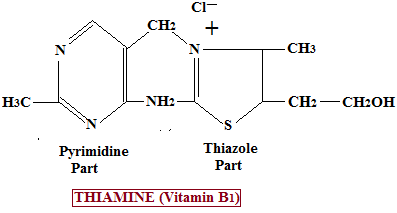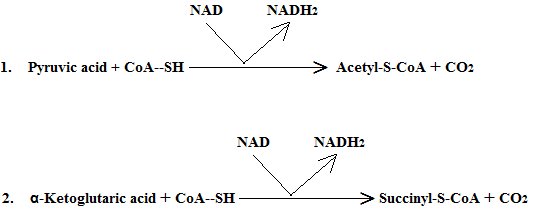Vitmain B1 (Thiamine)
(Aneurine, Vitamin B1, Anti-neuritic or Anti-beriberi Factor)
 Properties of Vitam B1
Properties of Vitam B1
It is a white, crystalline compound, very soluble in water. It is slowly destroyed by moist heat. It is not destroyed if cooking temperature is not much above 100oC. It has an odor like that of yeast. Thiamine has a pyrimidine and a thiazole part in its molecule.

Occurrence of Thiamine (Vitamin B1)
It occurs in the outer layer of grains like bran and rice polishing. Best dietary sources are whole grains, legumes, beef, liver, nuts, and yeast while eggs, fish and vegetables contain it to a lesser extent. White flour, polished rice (from which husk has been removed by milling) and white breakfast cereals are very deficient because milling causes loss of a large amount of this vitamin. Milk is also deficient in thiamine but can be a good source if taken in large amount. Intestinal bacteria do not seem to be a good source of thiamine.
 Biochemical Role of Thiamine
Biochemical Role of Thiamine
Thiamine forms the coenzymes thiamine diphosphate or pyrophosphate (TPP) in the following way.

TPP is a coenzyme (cocaroxylase) for α-keto acid decarboxylases and is involved in the following reactions

TPP is also a coenzyme for the enzyme transketolase which is involved in pentose phosphate pathway of glucose metabolism.




